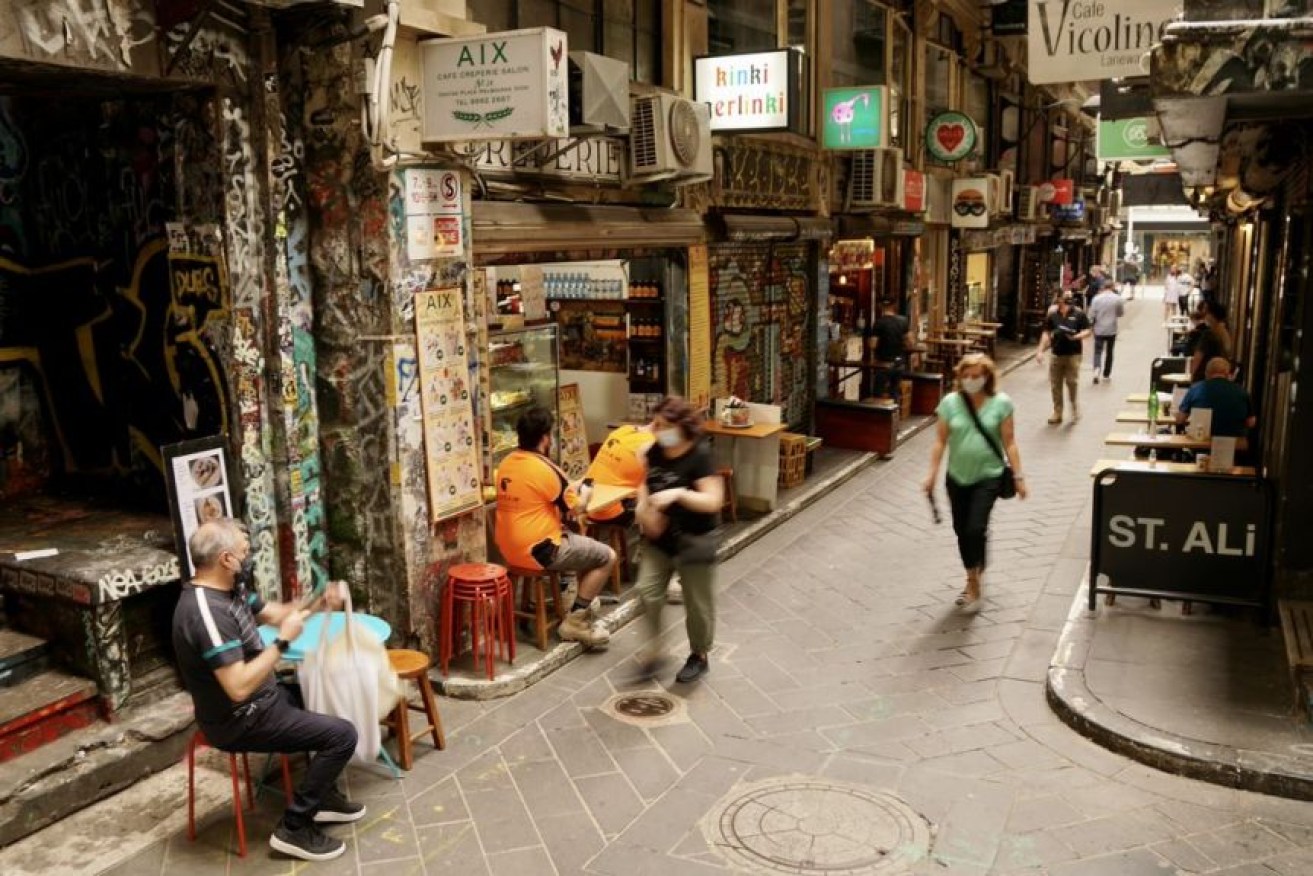How many ‘doughnut days’ does Victoria need to be declared COVID-free?

Melbourne has enjoyed 10 days without a new COVID-19 case, and the city has started reopening. Photo: ABC News/Ron Ekkel
After more than 10 consecutive days without any new coronavirus cases, many Victorians are starting to ask whether the state is close to eliminating the virus altogether.
So what is required for a community to be declared COVID-free? And is it really a possibility in Victoria after such a serious second wave?
We’ve asked the experts for you.
Victoria could be on track for elimination

Victorian health authorities say testing is still an important part of the state’s strategy to contain COVID-19. Photo: ABC/Reuters/ Lindsey Wasson
Latrobe University epidemiologist Hassan Vally said it was possible the virus had essentially been eliminated in Victorian communities.
“You can’t be sure whilst you are still in the incubation period of the virus,” he said.
“It could be that someone caught the virus 12 days ago and they haven’t had the symptoms yet so they haven’t been tested,” he said.
“So it is possible there is still some virus lurking that we haven’t detected, but the longer you go with zero cases detected, the more confidence you can have that you have eliminated the virus.”

Dr Hassan Vally said health authorities used an “aggressive suppression” strategy. Photo: ABC/LaTrobe University
Dr Vally said because the virus was still quite new there wasn’t an agreed time that a community had to go without new cases in order for the virus to be considered eliminated.
But he said there was a general view that a 28-day period without any cases should show a community is COVID-free, because that represents two incubation periods for coronavirus.
“If you have zero cases for 28 days you pretty much have zero chance of having any community transmission,” Dr Vally said.
He said some scientists would probably argue that was a very conservative timeframe.
Dr Vally said Victoria was already in a position where authorities could be confident there was little community transmission.
“The real risk is importing the virus so that is where we have to be really vigilant about hotel quarantine and who we let into the state or into the country,” he said.
However Victoria still faces COVID-19 risks

Professor Mary-Louise McLaws says Australia now needs to develop a national COVID-19 approach. Photo: ABC News Video
University of New South Wales Professor of epidemiology, Mary-Louise McLaws said it would be difficult to eliminate the virus entirely while cases were still climbing in other parts of the world.
“We have the disease coming in inadvertently with cargo ships, cargo aeroplanes of essential goods being delivered, air attendants and pilots coming in from overseas bringing in our Australian residents who are returned travellers,” she said.
“And those returned travellers are a risk, a small risk, of leaking into the general community.”
She said the fact many people don’t experience any symptoms while they have COVID-19 also made it a more difficult virus to eliminate, but that a 28-day timeline to assess whether there were still cases in the community was fair.
“Aiming for zero is excellent because you can’t get a suppression without aiming for zero, but don’t be upset when you get the occasional case because we are in a pandemic,” she said.
Professor McLaws said as state borders opened up, it would become more important for Australia to have a national approach to suppressing COVID-19.
We need to assume there could still be cases
Victoria’s Chief Health Officer, Brett Sutton, said it was important Victoria continued to work on the assumption there could still be undetected cases.
“The best assumption to make is that there are more cases out there and we need to continue testing to find them,” he said.
Professor Sutton said he didn’t think there was significant transmission the state wasn’t aware of.
“I think it’s unlikely there will be significant numbers out there that are undetected because they would end up presenting to the emergency department needing hospital admission,” he said.
But he said it was important Victorians continued to get tested because that is a critical element to the state’s control of the virus.








